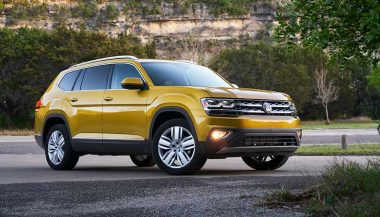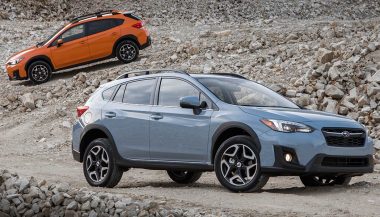
With the Toyota C-HR, the first thing you'll notice is how busy the exterior is.
Toyota C-HR: It’s Not the Little Crossover That Could
This was supposed to save Scion, but it arrived too late. That’s right, the Toyota C-HR is a would-be comeback kid, which might actually be helping to revitalize the Toyota brand.
With Scion no more, Toyota has gained a few carryovers. This, aside from the FR-S/86, is the most exciting. Plenty of people have accused Toyota of getting stale. After all, it’s the brand that makes one of the most hated vehicle by enthusiasts: the Camry, which also happens to be the year-in-year-out best selling midsize sedan. Others, like the Venza and RAV4, aren’t exactly that kind of thing that gets your heart racing.
Will the Toyota C-HR change that perception?
Toyota Gone Wild
The C-HR marks a big departure in how Toyota designs vehicles. Okay, technically it was Scion that crafted this little crossover, but considering most who worked on the project were just absorbed into Toyota, it’s all the same at this point.
Walking up to the Toyota C-HR, the first thing you’re struck with is how busy the exterior is. It can be a little jarring at first, but then the geometric, swooping lines start growing on you. It’s funky, but has a fun flair, which I believe is where the designs for the Nissan Juke and Jeep Cherokee fell flat.
I admit, the weird shelf or ridge created in the back where the glass ends is something I think could’ve been smoothed out more. But plenty of other things work, including the wheel design.
One of the best parts is how Toyota made the C-HR look like a coupe, while it’s really a four-door vehicle. The rear handles are cleverly disguised, without making them difficult to use. This really adds to the sporty quality of the crossover.
The interior isn’t quite as funky, but it has some flairs that keep things interesting. Clean lines, big physical controls, and surprising finishes make it a great place to hang out during daily commutes.
I wasn’t expecting much from the backseat, and my suspicions were confirmed by the cramped space. What did shock me was the ample cargo area behind the backseat, which I admit is made possible partly by the rear layout I don’t like the look of.
The Numbers
For a crossover that starts at $22,500, you might expect a little more than the 144 horsepower and 139 lb-ft of torque the 2.0-liter four-cylinder engine puts out. Some people might not care about those figures, because that engine will probably run forever. For others, it’s going to be a problem. It works with a CVT, which is another thing that bothers enthusiasts. Obviously, this isn’t a vehicle for people who love to drive.
I keep calling the Toyota C-HR a crossover, and that might irk some people. There’s no industry standard for what constitutes a crossover, but some people think available all-wheel drive should be a requirement. You can only get this vehicle with front-wheel drive, which is an issue if you live where it snows or rains a lot.
Among the standard features is a 7-inch infotainment screen, a 4.2-inch display in the gauge cluster, and an electric parking brake. You can get some impressive equipment, like a smart key, puddle lights and automatic folding side mirrors, to name a few examples.
One other thing: the C-HR has a most interesting suspension. The MacPherson strut in the front uses SACHS dampers, plus angled strut bearings and a thicker stabilizer bar than you might normally find on such a vehicle. Toyota designed a completely new double wishbone suspension for the rear, which also uses SACHS shock absorbers that have urethane upper supports. This is a new approach for Toyota.
Driving Experience
To be honest, the Toyota C-HR feels slow. It’s not painfully slow, but it’s still slow. I really think Toyota should consider turbocharging to spice things up. The CVT is okay, but that’s about it. So, merging into traffic, climbing, hills and passing on the highway are anything but exhilarating activities.
That’s not to say the C-HR isn’t entertaining at all. It does corner really well. So, while it won’t knock your socks off with tons of power, the crossover makes up for it by letting you whip through turns almost like you’re driving a sports car. The SACHS dampers really smooth things out, so passengers will stay comfortable.
As for interior comfort, it’s good, but cramped. The C-HR is a small vehicle, and I’m a big person – it’s not one of the best cars for tall drivers. Fitting in the backseat is out of the question for me, unless I want to hold some weird yoga pose. Even the front seating area is a little on the tight side. But the seats themselves are supportive and cushioned enough for longer drives to be more than just tolerable. In other words, they’re not great, but they’re not horrible.
As Homer Simpson said, I like my beer cold and my TV loud, and my crossovers utilitarian. The C-HR has a surprisingly large cargo area. Otherwise, it’s not very utilitarian. For some people, that’s okay. I really wish all-wheel drive was available, plus a turbo. Those two things would make the C-HR perfect.





